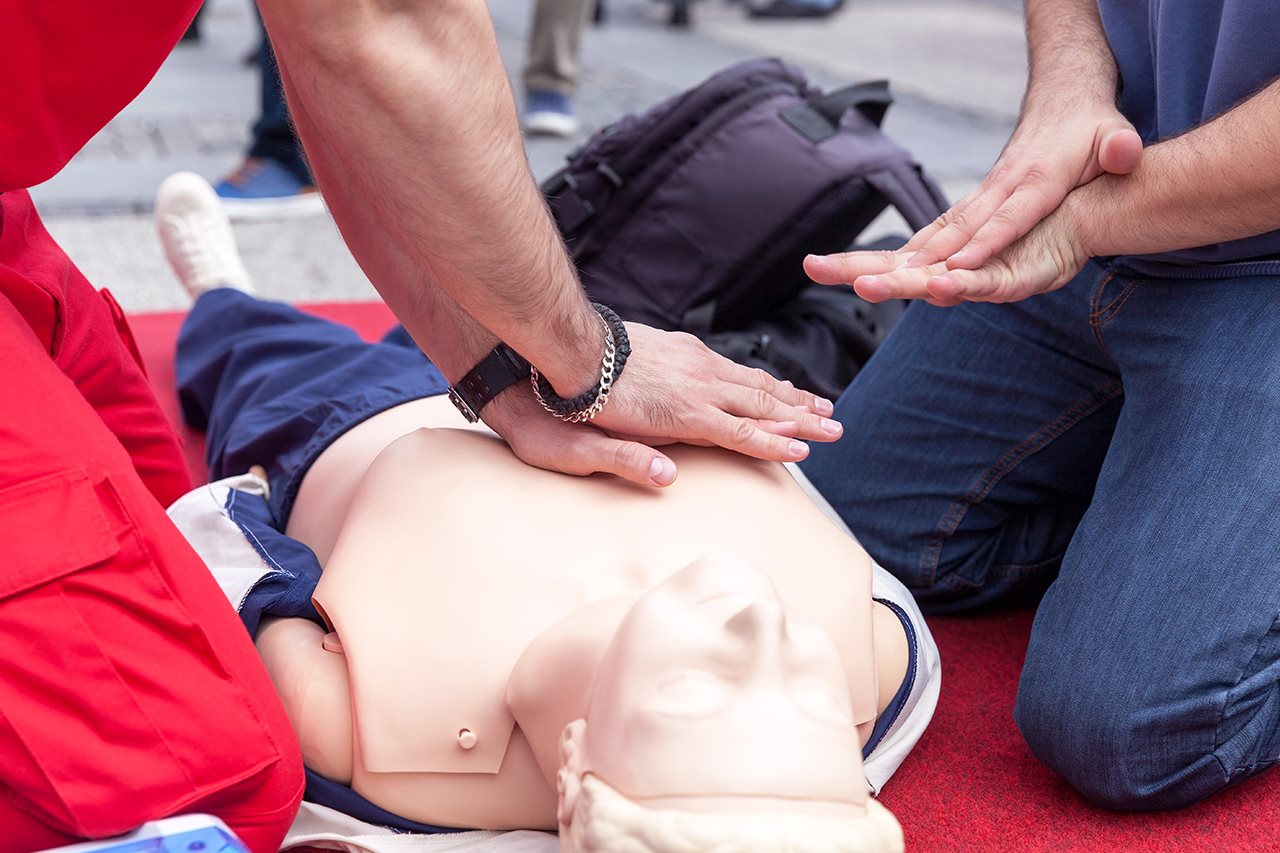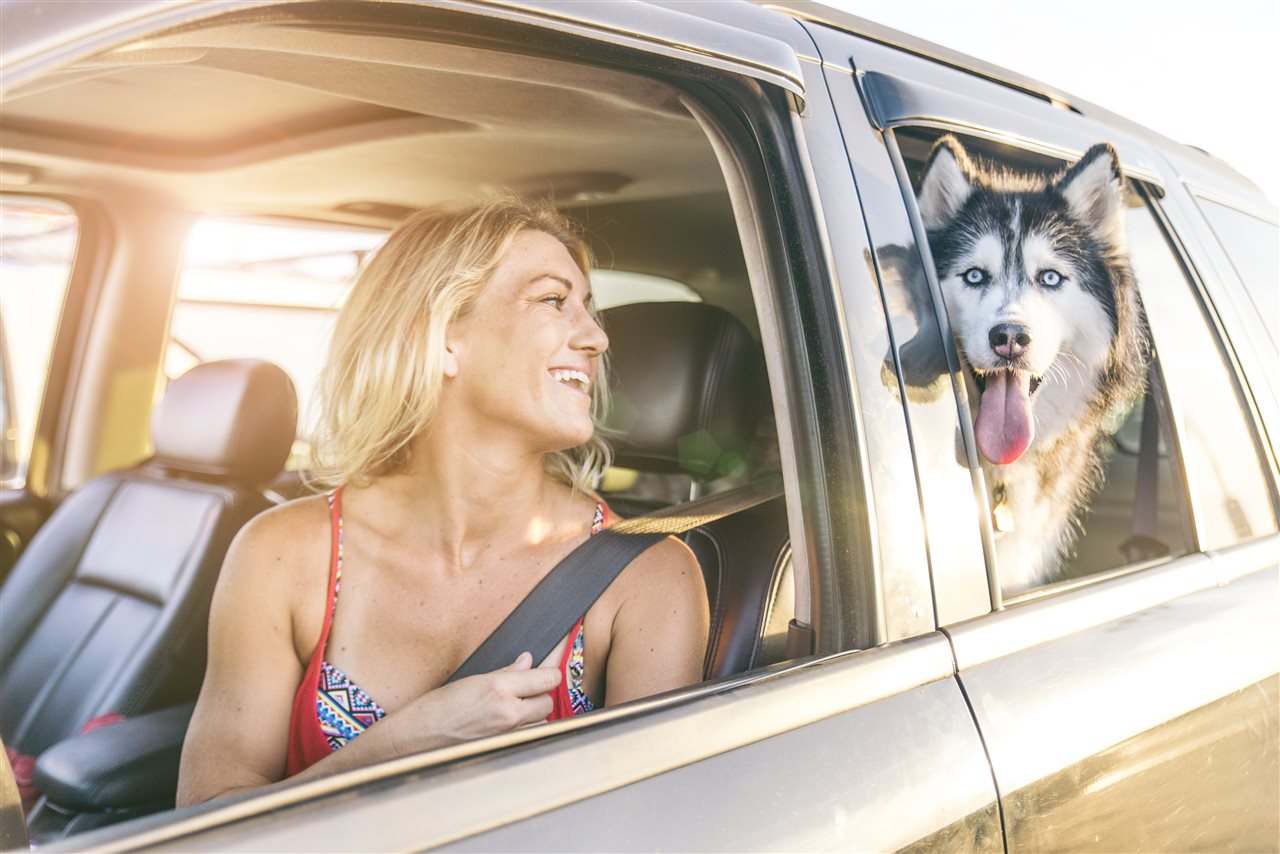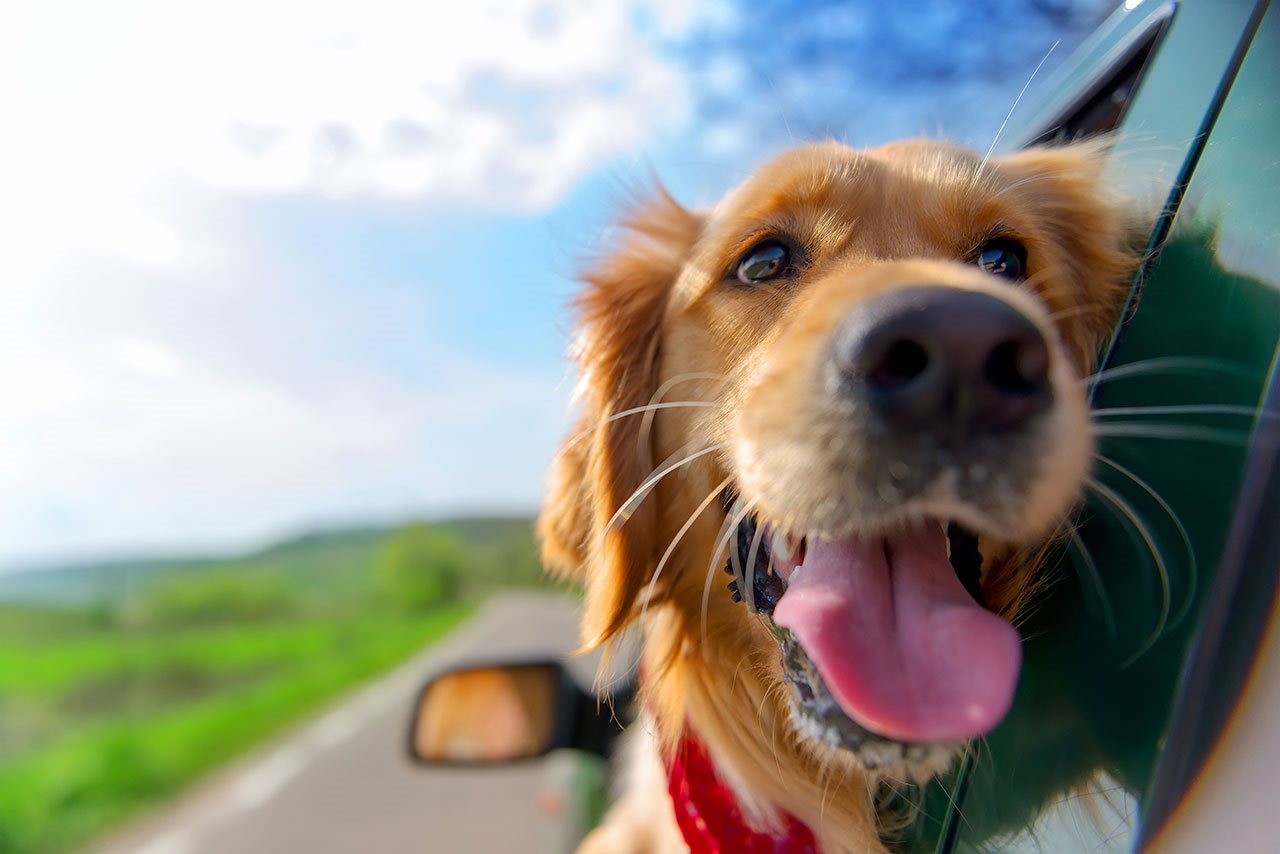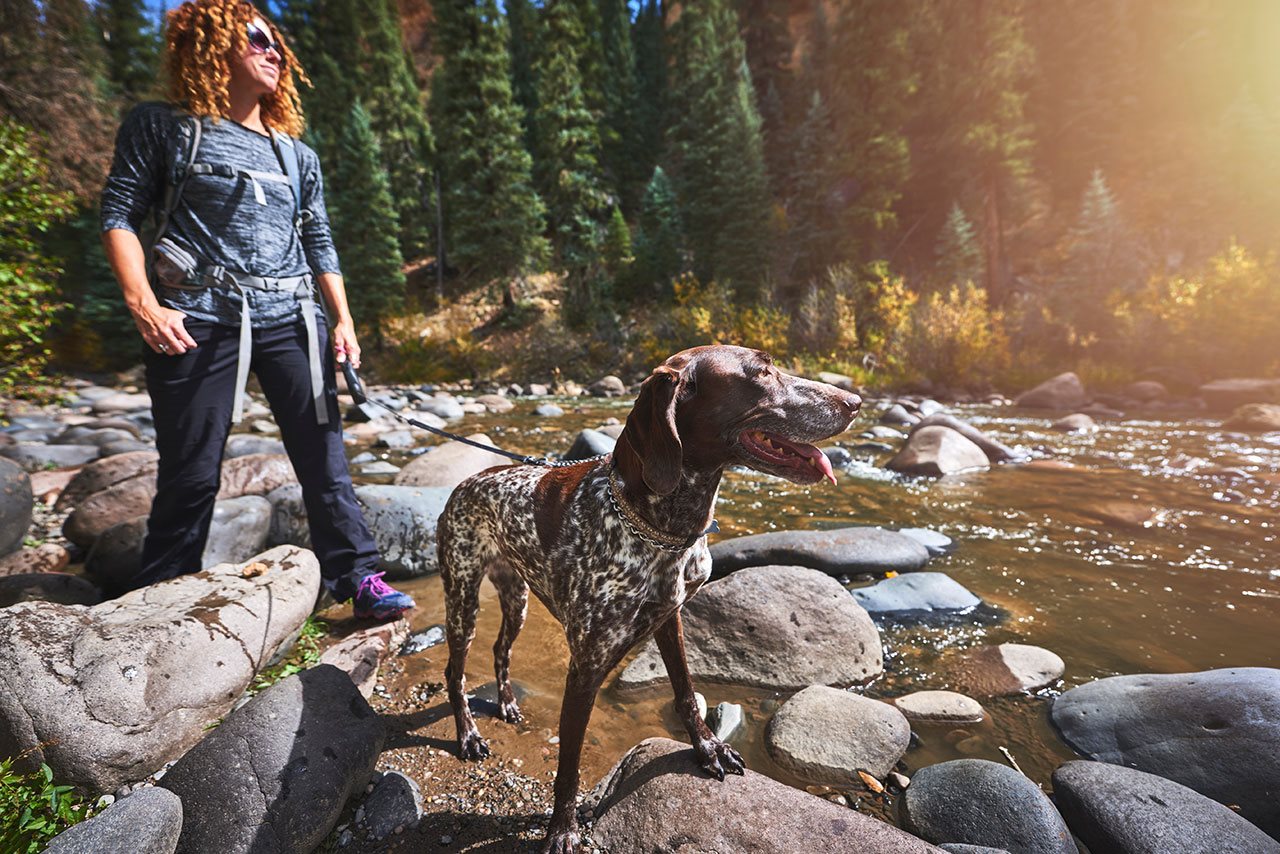2019-06-27T11:01:00
(BPT) – Don’t let everyday laundry products dull your vibrant vibe or clothing! Keep your beach cover-ups and colorful shirts bright all year long with Clorox 2 for Colors, no matter how many wears!

2019-06-27T08:01:00
(BPT) – When it comes to recycling, do you know what to throw?
A plastic milk jug is recyclable, but an old plastic toy isn’t. The cardboard box from your latest online order can go in your recycling container, but a greasy pizza box shouldn’t. Aluminum cans, yes; aluminum foil, no.
It can seem confusing, but that’s where Recycling Simplified comes in. Republic Services aims to simplify recycling with easy-to-follow tips for consumers.
Consumers are trying to do the right thing by recycling, but they don’t always know what — or how — to recycle. In fact, about one-third of what gets tossed in curbside recycling containers doesn’t belong there. That’s one out of every three items!
Many items are placed in the recycling bin with the hope that they’ll be recycled. This is known as “wish-cycling.” But people sometimes confuse “reuse” with “recycle.” Examples of this include old clothing and shoes, stuffed animals, tools and plastic toys. All of these items could be reused if donated, but they won’t find a new home if you put them in your recycling bin. Take them to a donation box or thrift shop.
So, what does belong in the recycling bin? There are three main categories of recyclables: Paper and cardboard, metal cans including aluminum, and plastic bottles and jugs. With bottles and jugs, leave the caps on or throw them away — they’re too small to recycle by themselves.
Also, recyclables should be empty, clean and dry. Even when an item is recyclable, like a soup can or plastic ketchup bottle, any remaining food or liquid becomes a problem. When those items come into contact with clean recyclables, that leftover chicken noodle soup will saturate otherwise good paper and cardboard. This is known as contamination, and once it happens, perfectly recyclable items become trash and wind up in the landfill — which is what we’re all trying to avoid by recycling.
And don’t bag your recyclables. The sorting process at a recycling center happens quickly, and most of what is bagged or bundled ends up in the garbage because sorters cannot see the contents. Plastic bags also can get tangled in the machinery, causing delays or even damage.
“Many of us want to be better recyclers, but we aren’t sure how or think we don’t have the time,” said Pete Keller, vice president of recycling and sustainability at Republic Services. “With a few simple steps, we can all do our part to make environmentally responsible choices and help make a positive impact in our community for generations to come.”
Make sure you know how and what to recycle with these simple Do’s and Don’ts from Republic Services:
DO recycle paper products. Clean, dry, flattened cardboard, newspapers and magazines, office paper and mail are accepted. Break down cardboard boxes before putting in your bin and remove any plastic such as the see-through windows in envelopes.
DO recycle empty soda or food cans. Be sure any remaining food or liquid is removed and the can is rinsed and dry.
DO recycle “Empty, Clean, Dry” plastic. You can leave the tops on bottles and jugs.
DO remember, when in doubt, throw it out. If you’re unsure whether an item is recyclable, put it in the trash.
DON’T recycle wet or food-tainted items. A greasy pizza box should go in the trash.
DON’T recycle cans that held hazardous waste. Metal cans that contained paint, oil or any other potentially hazardous waste need special handling. Consult your city or county website for information on hazardous waste disposal.
DON’T recycle yard or food waste. Composting options for tree trimmings and other yard waste may be available in your community, but not via your recycling container.
DON’T bag it. Reuse plastic bags if you can, then return them to grocery stores for commercial processing.
For more quick and easy guidelines to becoming a better recycler, visit RecyclingSimplified.com.

2019-06-27T07:01:00
(BPT) – Do you have an upcoming trip planned? Whether you’re going for a relaxed beach look or heading downtown to dazzle in the city lights, you want to plan outfits that make you feel great and fit the occasion. Jewelry is the go-to for defining your look, but you can only bring so many pieces. What’s the best solution?
When you travel, it’s great to have versatile pieces of jewelry that minimize your packing, but not your style. From adjustable necklaces to hoops with added charms, the experts at Jewelry Television (JTV) recommend these pieces to provide looks for every trip and travel memory! Here are some versatile pieces of jewelry and tips for mixing and matching to create distinct looks without overpacking your accessories:
By taking some adjustable necklaces or magnetic extenders, you can wear the same pieces several times and achieve a different look. Wear it alone or adjust the length and layer it with a multi-strand necklace to complement various necklines on different outfits. You can also get an ensemble that enables you to rotate the chains or gemstones to create coordinated looks to match your attire.
2. Endless strands or lariat style necklaces
Endless strands are long-length, no-clasp necklaces that can be worn long and layered, wrapped or even knotted. A lariat necklace has a design of its own; unlike traditional necklaces it has a lariat in place of a clasp, providing a lot of flexibility for styling. Very versatile, an endless strand or lariat style necklace can be worn several different ways to create or complete your look. Wear it long or short, wrap it around to layer, or drape the ends down your back to accent an open or low-back outfit. You can also wear the lariat style necklace as a belt for an alternative vibe.
3. Interchangeable pendants or charms
A versatile set of earrings with interchangeable charms complements multiple outfits, and changing out the charms is a breeze. For example, a set of filigree hoops can be worn alone or you can swap out the charms for four unique looks. The same versatility can be achieved with one chain and multiple pendants to create the look of extra necklaces without the extra baggage.
4. Stackable bracelets and rings
Want a fashion-forward jewelry look for your next trip? Layering and stacking is a trend everyone loves and is perfect for creating different styles with minimal effort. Choosing stackable bracelets enables you to vary your look from minimalist to fully layered — and everything in between. It’s easy to mix and match to create different styles. For rings, layer them on one finger or spread them across multiple fingers to transform your look from daytime to evening or one event to the next.
5. Consider alternative jewelry
Depending on your trip and what excursions you have planned, you may be tempted to bring your best tennis bracelet or gemstone pendant, but to keep jewelry safe, consider options that create the same high fashion look for less. Also, if you’re headed to the beach, consider leaving your diamond ring secured at home and wear a Bella Luce ring in its place.
As always, the JTV experts recommend transporting your jewelry in a travel-proof jewelry roll for safekeeping. For more tips and to explore versatile jewelry styles, visit https://www.jtv.com/traveltips.

2019-06-27T07:01:00
(BPT) – Is there anything better than spending the sizzling dog days of summer splashing in a pool? Whether at your home, a friend’s house or a community center, swimming is a wonderful way for families to bond and make the most of the hot weather, but it’s important not to let the fun overshadow important water safety guidelines.
Drowning is the leading cause of unintentional death among children ages 1 to 4 years old. According to new data released by the U.S. Consumer Product Safety Commission (CPSC), fatal child drownings in the United States are on the rise, with an average of 363 — or nearly one per day — pool- or spa-related fatal drownings involving children younger than 15 years old each year. From 2016 through 2018, an average of 6,600 children were treated in hospital emergency rooms for nonfatal drowning injuries in pools or spas each year.
As temperatures soar, remember to follow these six important steps while spending time in and around the water, provided by Pool Safely, a national public education campaign from the U.S. Consumer Product Safety Commission.
Teach children how to swim

When children learn how to swim, they become more comfortable around water and understand important safety rules. Sign up for local lessons and practice with your child in the pool so they strengthen their skills.
Never leave a child unattended

If you need to leave — even just for a moment — ask another adult to watch your child while you’re gone. Always designate a Water Watcher any time your child is in or near the water.
Teach children to stay away from drains

Children’s hair, limbs, jewelry or bathing suits can get stuck in drain or suction openings, so it is important to teach children not to play or swim near drains.
Ask about drain covers

Be proactive and ask to confirm that all pools and spas you visit have compliant drain covers. Adequate and safety-compliant drain covers are important in backyard pools and any public pool you visit.
Install proper barriers

If you have a pool or spa, it’s important to install proper fences, alarms and covers to keep unsupervised children from accessing the water.
Learn CPR

Bystanders are often the first to aid a drowning victim, so learning how to perform CPR on children and adults can help prepare you to save a life. Many communities offer free or low-cost training.
These six tips will help you keep your family safer, so you can enjoy the best of summer by the pool. Take the next step when you take The Pledge to Pool Safely, which affirms your dedication to:
For more information and drowning prevention resources visit https://www.poolsafely.gov/.

2019-06-27T07:01:00
(BPT) – Having a persistent cough wasn’t something new to Debbie. As early as high school, she found herself coughing excessively on the school bus due to the cigarette smoke from her fellow classmates. Over the years, she was prescribed an antibiotic and antihistamine for each new cough, and eventually, it disappeared.
However, Debbie realized that it may be something more, when her cough persisted throughout adulthood, along with other symptoms like chills, fever and fatigue.
After 15 years of searching for answers, countless doctors and testing, Debbie received the correct diagnosis — an overlooked, chronic and progressive lung condition called nontuberculous mycobacterial (NTM) lung disease. Since the symptoms of NTM lung disease are similar to other lung conditions, such as chronic coughing, fatigue and shortness of breath, many people who have it may not even know it for months or sometimes years.
About NTM Lung Disease
NTM lung disease is a serious condition that can cause damage to the lungs, and in the U.S., cases are increasing at approximately 8 percent each year. In 2018, it is estimated that 75,000–105,000 patients were diagnosed with NTM lung disease in the U.S. The condition is caused by bacteria that are common in the environment and are breathed in. NTM bacteria can be found in places such as tap water, showerheads, steam from hot tubs, and soil from parks and gardens. The most common species of NTM lung disease is called Mycobacterium avium complex or MAC, which accounts for more than 80 percent of all cases in the U.S.
While everyone comes into contact with NTM bacteria during their daily lives, most people do not develop NTM lung disease because their lungs are healthy enough to clear the bacteria. However, people with a history of lung conditions, like bronchiectasis, chronic obstructive pulmonary disease (COPD) or asthma, are more likely to develop NTM lung disease because the damage from these conditions can make it easier for NTM to infect their lungs.
Finding Answers
Over the course of several years, Debbie consulted many physicians about her lingering cough. One incorrectly diagnosed her as being borderline asthmatic, and others could offer no explanation for her symptoms.
“Undergoing tests that all came back without a clear answer was frustrating, to say the least. When I was told nothing was found from my doctors, I thought that maybe there wasn’t something serious causing my symptoms, and eventually my cough would disappear,” said Debbie.
As her cough and other symptoms persisted, Debbie visited her local internal medicine doctor who diagnosed her with pneumonia. However, her X-rays told a different story, so she was referred to a local pulmonologist who conducted a bronchoscopy and shipped the sample out for testing. She was then diagnosed with a type of NTM lung disease known as Mycobacterium avium-intracellulare infection (MAI).
Debbie encourages other at-risk patients to consult their doctor about NTM lung disease if they have an existing lung condition and symptoms that won’t go away. She shares, “If you’re experiencing symptoms, I would suggest that the first step is to recognize the problem and take action for early diagnosis by discussing with your doctor if you should be referred to a specialist and asking if you should be tested for the condition. Being your own advocate and starting these conversations with your doctor may help speed up the time to diagnosis.”
Resources for NTM Lung Disease Patients and Caregivers
Now living with NTM lung disease for almost 19 years, Debbie has found that it’s helpful to connect with others living with the condition and learn about their experiences. This led her to start the New York NTM lung disease support group, using her experience to offer support to those in the early stages of the NTM lung disease journey.
There are also several online patient resources available with information about NTM lung disease, such as the new Voices of NTM Lung Disease eMagazine on AboutNTM.com, which provides information on living with and managing NTM lung disease through first-person stories from different members of the community, like Debbie. On AboutNTM.com, you can also access more information on how to join support groups to connect with others who have NTM lung disease, and how to sign up to receive helpful resources and support.
Sponsored by Insmed Incorporated.

2019-06-27T06:01:00
(BPT) – It is the height of festival season, themed around everything from music, food and drinks to culture and more. Preparation is key to having a healthy and happy summer. Keeping up your energy levels throughout the day with cleverly planned snacks can help control hunger levels.
Check out these tips and tricks, recommended by registered dietitian Toby Smithson, to ensure you’re concentrating on the fun stuff and not depleting energy levels during your favorite festival outings:
Long wait, smart snack
Always carry smart, portable snacks to have on hand for long breaks between festival sets or to tide the group over before the main food event. Sometimes the food selection is slim, or you don’t feel like standing in a seemingly never-ending line for overpriced food. That’s why it’s also key to have more filling snack foods on hand in case nothing appealing is available and you need them to supplement a meal.
Smithson encourages snacks with protein, fiber and good fats to help you stay energized and full longer. “Almonds are normally included in my go-to snack,” Smithson said. “A carb-only snack just isn’t going to cut it during a full day or afternoon of festival fun!”
Hydrate, hydrate, hydrate
Bring a reusable water bottle or thermos that you can fill up at water fountains or water stations to stay hydrated all day long, especially if alcohol is involved in your fun! Add orange slices or mint leaves to give your water a refreshing twist.
Balance it out
Snacks like chips and sweet treats can mean unbalanced eating with too many empty calories that cause your energy to nose-dive. Nutrient-packed snacks like whole fruit and nuts can balance out the spread — helping you to stay strong no matter how long the wait.
It’s all about options
On your journey to the festival, why not create an on-the-go trail mix by keeping a selection of popcorn, dried fruit and almonds in the car? It can be easily transferred to your backpack for a quick energy boost. You can also keep this trail mix handy while you enjoy your day and mix up the selection with sweet and savory ingredients. Here are a few great trail mix recipes to try!
BBQ Almond Trail Mix
Serving Size: 1/2 cup
Ingredients:
Preparation:
Gently heat rosemary and extra virgin olive oil together in a small sauté pan for about 5 minutes to infuse flavor very slowly on a low heat. Let it cool. Mix the rest of the ingredients together. Once the rosemary oil is cool, mix with the rest of the trail mix. Season with salt to taste. Keeps well in an airtight container.
Nutritional Info:
Calories 268; Fat 4.3 g; Sat Fat 4.3 g; Mono Fat 1.1 g; Poly Fat .2 g; Protein 6.7 g; Carb 19.9 g; Fiber 4.8 g; Cholesterol 19.7; Sodium 31.3 mg; Calcium 74.9 mg; Potassium 63.3 mg; Vitamin E 6.39 mg
Savory Curry Snack Mix
Serving Size: 1/3 cup
Ingredients:
Preparation:
Put the ingredients into a medium-sized plastic freezer bag and shake until mixed. Portion each serving in an airtight container or bag for an easy snack throughout the week.
Nutritional Info:
Calories 211; Fat 15 g; Sat Fat 1 g; Protein 6 g; Carb 16 g; Fiber 3 g; Sugars 9 g; Added Sugars 0 g; Cholesterol 0; Sodium 110 mg; Calcium 83 mg; Potassium 276 mg; Iron 2 mg

2019-06-26T13:11:01
(BPT) – If you are one of the 7 million Americans living with diabetes that relies on insulin every day to help manage your condition, you understand the complexities of the U.S. healthcare system. It’s a confusing system for many. Even more importantly, high out-of-pocket costs for patients have made lifesaving medicines like insulin not as easily accessible to all who need them.
“We need to look at costs for essential medicines in a new and different way,” said Jennifer Trujillo, Associate Professor, University of Colorado Department of Clinical Pharmacy, and American Pharmacists Association (APhA) Member. “There should be no situation in which a person living with diabetes goes without insulin, no matter their health insurance or income situation. This is just not acceptable. That is why we need more people to be aware of the programs available that could help lower out-of-pocket costs at the pharmacy counter.”
There are several different ways to access insulins at a reduced cost right now — today — regardless of insurance status:
1. Uninsured — Pharmaceutical companies are creating programs to help people who are faced with high prices at the pharmacy counter — for Sanofi, it’s the Insulins Valyou Savings Program.
For more information about the Insulins Valyou Savings Program, visit www.InsulinsValYOU.com.
Through this program, uninsured patients paying cash in the U.S. pay $99 per month to access certain Sanofi insulins with a valid prescription, for up to 10 boxes of pens and/or 10 mL vials per month. Anyone who is uninsured can participate in the program — regardless of income level. This includes those who are paying high retail prices for their insulin and those who don’t qualify for other patient support programs.
In addition, many companies provide medications, including insulin, at no charge for qualified low-income, uninsured patients, like the Patient Assistance Connection component of the Sanofi Patient Connection program.
2. Commercial Insurance — For those who are commercially insured — such as those who receive healthcare through an employer program or through online healthcare exchange plans — co-pay programs are available and designed to limit out-of-pocket expenses sometimes to $0, regardless of income level.
Medicare Part D and Medicaid patients are unable to access most patient co-pay assistance programs due to federal regulations; but many companies are actively working to change these rules. In addition, pharmaceutical companies negotiate discounts on products that are not always pushed through to patients. New legislation is being proposed to change this so that all patients are able to benefit directly from these discounts.
There is no one solution to this access and affordability puzzle. It takes a suite of programs to support each person’s distinct needs.
“If you or a loved one is living with diabetes, it’s important to know that there are programs out there that can help,” said Trujillo. “I encourage people to check the manufacturer of your insulin to see what programs may be available to you.”
Anyone who is prescribed a Sanofi medicine, and who may be having financial challenges or trouble navigating their insurance, can call Sanofi Patient Connection at 888-847-4877, where eligible patients can be connected to the medicines and resources they need.
2019-06-26T11:45:00

(BPT) – The great American road trip has officially gone to the dogs. In a recent online Google consumer survey, three-in-four travelers said they planned to take a road trip with their pet this summer, and 12% of travelers would rather hit the open road with their dog over family or friends. It actually makes sense — your four-legged friend is unlikely to be a backseat driver, ask “Are we there yet?” or complain about your playlist.
Using insights from the survey and new pet travel and booking data, Orbitz and Dollar Rent A Car have mapped out seven of the most pet-friendly road trips to plan this summer. The 2- to 5-day routes were hand-picked by travel editors and pet experts based on availability of pet-friendly hotels, bars and restaurants, outdoor attractions and gram-worthy locales. So buckle up and turn up “Who Let the Dogs Out?” for the best road trip ever.
1) Enjoy the “Paw-cific” Northwest — Portland to Seattle

Stay at the Hotel deLuxe in Portland, which provides a doggie bed and treats, then play fetch in the off-leash area of Wilshire Park. Drive northwest, hitting scenic stops like Elk Creek Conservation Area in Forks, Washington, the setting for everyone’s favorite teen vampire saga. At Bainbridge Island, pamper your pet at the Salty Dog Wash. Celebrate your arrival in Seattle with a pint at Voff Bark & Brew, which calls itself “a bar made for dogs by dog people.”
2) Cruise coastal “Collie-fornia” — San Diego to Santa Barbara

Play Frisbee at the off-leash Coronado Beach and Dog Park in San Diego, then hit Fido-friendly In-N-Out Burger in Oceanside to enjoy burgers on the outdoor patio. Coast past Malibu to reach Solstice Canyon for a dog-friendly trail ending in a swimmable creek. Swing through Ventura County for an Instagrammable moment in front of “Bus Home,” a sculpture resembling a dog house. Arriving in Santa Barbara, enjoy a relaxing stay at the dog-friendly Hotel Indigo.
3) Take a Southwest National “Barks” Tour — Las Vegas to Bryce Canyon National Park

For your overnight in Vegas, stay at the Delano Las Vegas at Mandalay Bay, which boasts a dog-friendly menu and provides dog-sitting so you can hit the slots. Head to Sedona, Arizona, for an off-road, dog-inclusive adventure with A Day in the West Jeep Tours. Then take a breathtaking hike along one of the Grand Canyon’s 12 miles of dog-friendly trails. In Utah, your dog can enjoy swimming at the Doggy Dude Ranch near Zion National Park. Then enjoy glamping in a luxury tent at Under Canvas Zion before hitting Bryce Canyon National Park.
4) Explore the Rockies unleashed — Denver to Salt Lake City

Check out the Railyard Dog Park in Denver before heading to Golden for a cold brew. Many breweries, like Gold City, welcome canine companions. If your dog enjoys water, stop at Grand Junction to rent a kayak from Rimrock Adventures — and BYO doggie life jacket. Float along the Colorado River, then take a refreshing swim with your four-legged friend. In Salt Lake City, enjoy a meal at Pig & a Jelly Jar, a dog-friendly restaurant with a great outdoor patio. Before heading home, stroll along the beach at Parley’s Nature Preserve.
5) Take a “Mid-woof” (Midwest) cruise — Chicago to Cleveland

Start by dining al fresco at casual Italian restaurant Bar Siena in Chicago, which offers a Puppy Patio Menu, then head to Belmont Harbor Dog Beach to play. Drive through Indiana toward Kalamazoo, Michigan, to stay at Henderson Castle, a historic mansion that welcomes pets and their people. In Ann Arbor, snap selfies with your canine pal at the famed Graffiti Alley, then pamper your pooch at the Dog-O-Mat. When you reach Cleveland, treat your dog to a “pupcake” at the Three Dog Bakery, followed by an off-leash jaunt at Edgewater Park.
6) Travel the “Beast” Coast — New York to Boston

Starting in New York, let your dog run amok at the Sirius Dog Run in Battery Park. Then head to Greenwich, Connecticut, to enjoy the scenic 4.1-mile loop at Babcock Preserve. Cruising through Massachusetts, check out the trails and working cranberry bog at the dog-friendly Wing Pond in Cape Cod. You can stay at dog-friendly Harbor View Hotel in Edgartown, offering gorgeous views of Nantucket Sound. Walk the trail leading straight to the beach in the scenic village of Ellisville. Celebrate your arrival in Boston by offering your pup complimentary treats at The Onyx.
7) Cruise the “Rover-seas Highway” — Miami to Key West

Before hitting Florida’s Overseas Highway, enjoy a meal at Lokal, where dogs get their own menus. Heading down through the Keys, stop at Theater of the Sea in Islamorada, a marine park with animal shows and attractions. Enjoy a walk on dog-friendly, beautiful Sombrero Beach in Marathon. Take a selfie with your pup at the Southernmost Point at Key West, then stay at the Perry Hotel, with its two dog parks, dog-friendly patio restaurants and a gift for your pooch.
These are just a few highlights from each route. For full itineraries or to download Google maps of these road trips, including pit stops at dog-friendly hotels, restaurants and attractions along the way, check out Orbitz.com/dogfriendlyroadtrips. Travelers can also save on pet travel this summer with 10% off the base rate on a weekend or weekly car rental from Dollar Car Rental and an offer for $10 off dog-friendly hotels from Orbitz.

2019-06-26T10:11:53
(BPT) – Health care is more complicated than ever. With rising premiums and different levels of coverage, it can be confusing to know what you can afford when it comes to wellness visits, urgent care and prescriptions.
Here are some simple ideas that could help you save on health care.
1. Get informed. If you have health insurance, make sure you understand what’s covered, especially if you are diagnosed with a chronic condition such as diabetes, high cholesterol or hypertension. If something is not clear or you are unsure about what’s covered, call your insurance carrier and make sure they provide you with the answers you need.
2. Save on your prescriptions. If you are uninsured, or your insurance doesn’t cover certain prescription medications, an Inside Rx card may be an option for you. The card is not insurance but a free discount prescription card that provides savings off select brand prescription medications and generic medications. There’s even a card for your pet’s prescriptions. Download the card on your phone and show it to your pharmacist to see if you can benefit and how much you could save. Eligibility requirements and a complete list of the medications offered can be found at InsideRx.com.
3. Shop around. You could save money by researching which pharmacy offers the best deal in your area. Inside Rx can also help you find the best deal for your specific medication at a pharmacy close to you if you are using the discount card. Also, discuss with your doctor if switching to a generic medication is an option for you; this could save you money when purchasing your medications.
4. Utilize your provider’s online platform. If your healthcare provider offers an online medical records system, log in and check to make sure you are up to date on vaccines, boosters, wellness visits and screenings. Check your insurance coverage before scheduling, but don’t delay on any of these, as the cost to your wallet and your health could be greater if issues are left untreated. Identifying problems early keeps you healthy and saves you money down the road.
5. Take advantage of wellness plans. If your employer offers a wellness plan, participate. You may get perks such as partial coverage of gym memberships with some employers’ plans. Talk to your employer’s human resources office about health savings or other plans that may be available to save you out-of-pocket costs. Don’t be afraid to ask questions to make sure you understand how the plans work.
6. Don’t delay treatment. If you’ve been diagnosed with a condition that requires treatment or medication, don’t put off starting your treatment. Talk with your doctor about any financial concerns.
7. Plan for medical bills. Just as you would ask a mechanic to estimate the cost of service on your car ahead of time, don’t be afraid to ask providers what services will cost. Many providers will work with you to arrange a payment plan when a medical bill is not covered by your insurance, or if you are uninsured or have a high deductible. Don’t be afraid to negotiate.
Rather than waiting for issues to arise, take charge of your health and plan for your health care related costs. While you can’t prepare for everything, you can give yourself every advantage by being informed, using the resources available and asking questions.

2019-06-26T08:01:00
(BPT) – Americans are increasingly enjoying new flavors and textures in our meals and snacks.
Consider how much we love our farm-to-table philosophy, food trucks, tapas restaurants, cooking shows, websites and social media sites devoted to food as experience. In fact, one study found 48 million Americans now identify themselves as foodies.
Almonds, in particular, are enjoying an elevated status among not just gourmands, but all consumers, especially snacking aficionados.
No longer is the slender, delightfully crunchy nut confined to mingling with its less-versatile nut cousins. Thanks to beautifully blended and balanced seasonings, the almond is recognized as a tasty treat treasured by food-lovers around the world. Not only do they pack a major punch in terms of nutrition and health benefits, but their light, unique taste and crunchy texture blend well with a wide range of sweet and savory flavors. Further, almonds are easy to stock in your cupboard, purse, suitcase or glove compartment for retrieval anytime you and/or your friends want a quick, delicious snack or hors d’oeuvres this summer.
Now that summer has finally arrived, here are five suggestions for when to enhance any munching moment with the natural, delicious goodness of almonds:
Anytime is a great time to enjoy Blue Diamond Gourmet Almonds and Almonds & Fruit. And when you plan ahead, you can stash away the delicious treats for the moments you’ll enjoy them most this summer.
